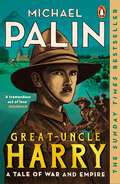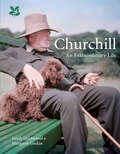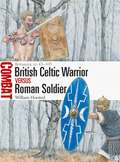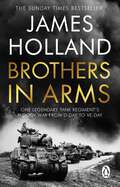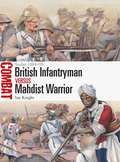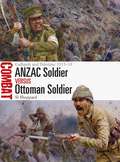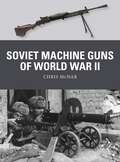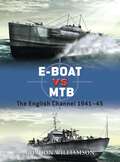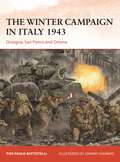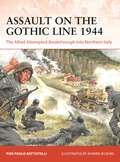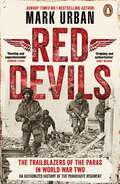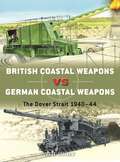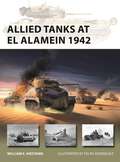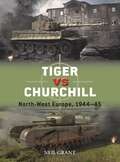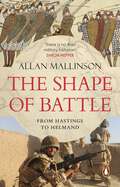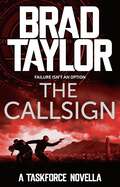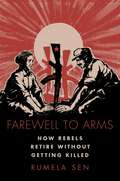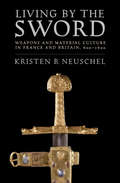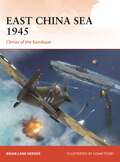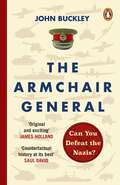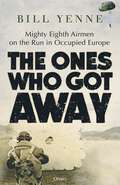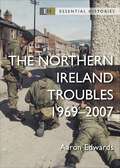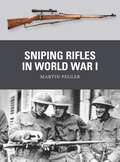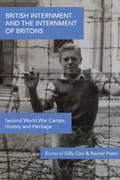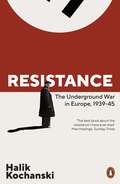- Table View
- List View
Great-Uncle Harry: A Tale of War and Empire
by Michael Palin'An important historical record and a well-paced story in its own right, Great-Uncle Harry is also much more than that: a tremendous act of love.' Guardian___________________________________From the time, many years ago, when Michael Palin first heard that his grandfather had a brother, Harry, he was determined to find out more about him.The quest that followed involved hundreds of hours of painstaking detective work. Michael dug out every bit of family gossip and correspondence he could. He studied every relevant official document. He tracked down what remained of his great-uncle Harry's diaries and letters, and pored over photographs of First World War battle scenes to see whether Harry appeared in any of them. He walked the route Harry took on that fatal, final day of his life amid the mud of northern France. And as he did so, a life that had previously existed in the shadows was revealed to him.Great-Uncle Harry is an utterly compelling account of an ordinary man who led an extraordinary life. A blend of biography, history, travelogue and personal memoir this is Michael Palin at his very finest.___________________________________________PRAISE FOR EREBUS:'Beyond terrific. I didn't want it to end.' BILL BRYSON'Magisterial . . . Palin brings energy, wit and humanity to a story that has never ceased to tantalise people.' THE TIMES'Everybody's talking about it . . . A brilliant book.' CHRIS EVANS'I absolutely loved it: I had to read it at one sitting.' LORRAINE KELLY
Churchill: An Extraordinary Life
by Sarah Gristwood Margaret Gaskin National Trust BooksA short illustrated life of one of Britain's most revered people of all time, covering all periods of his life but always returning to his literal and spiritual home, Chartwell.
British Celtic Warrior vs Roman Soldier: Britannia AD 43–105 (Combat)
by William HorstedAn illustrated study of the British tribal warriors and Roman auxiliaries who fought in three epic battles for control of Britain in the 1st century AD. Following the Roman invasion of Britain in AD 43, the tribes of the west and north resisted the establishment of a 'Roman peace', led in particular by the chieftain Caratacus. Even in the south-east, resentment of Roman occupation remained, exploding into the revolt of Boudicca's Iceni in AD 60. Roman auxiliaries from two particular peoples are known to have taken part in the invasion of Britain: the Tungrians, from what is now Belgium, and the Batavians, from the delta of the River Rhine in the modern Netherlands. From the late 80s AD, units of both the Batavians and the Tungrians were garrisoned at a fort at Vindolanda in northern Britain. The so called 'Vindolanda tablets' provide an unparalleled body of material with which to reconstruct the lives of these auxiliary soldiers in Britain.Featuring full-colour maps and specially commissioned battlescene and figure artwork plates, this book examines how both the British warriors and the Roman auxiliaries experienced the decades of conflict that followed the invasion. Their recruitment, training, leadership, motivation, culture and beliefs are compared alongside an assessment of three particular battles: the final defeat of Caratacus in the hills of Wales in AD 50; the Roman assault on the island of Mona (Anglesey) in AD 60; and the battle of Mons Graupius in Scotland in AD 83.
Brothers in Arms: One Legendary Tank Regiment's Bloody War from D-Day to VE-Day
by James HollandFrom the bestselling author of Normandy '44 and Sicily '43, a brilliant new history of the last days of the war'Seldom is war so vividly described...An assault on the senses...Painful to read, impossible to put down' Gerard DeGroot, The TimesIt took a certain type of courage to serve in a tank in the Second World War. Encased in steel, surrounded by highly explosive shells, a big and slow-moving target, every crew member was utterly vulnerable to enemy attack from all sides. Living - and dying - in a tank was a brutal way to fight a war.The Sherwood Rangers were one of the great tank regiments. They had learned their trade the hard way, in the burning deserts of North Africa. From D-Day onwards, they were in the thick of the action til the war's end. They and their Sherman tanks covered thousands of miles and endured some of the fiercest fighting in Western Europe. Their engagements stretch from the Normandy beaches to the bridges at Eindhoven. They were the first British unit into Germany, grinding across the Siegfried Line and on into the Nazi heartland.Through compelling eye-witness testimony and James Holland's expert analysis, Brothers In Arms brings to vivid life the final bloody scramble across Europe and gives the most powerful account to date of what it was really like to fight in the dying days of World War Two.
British Infantryman vs Mahdist Warrior: Sudan 1884–98 (Combat)
by Ian KnightIn the early 1880s, Britain intervened in independent Egypt and seized control of the Suez Canal. British forces were soon deployed to Egypt's southern colony, the Sudan, where they confronted a determined and capable foe amid some of the world's most inhospitable terrain. In 1881 an Islamic fundamentalist revolt had broken out in the Sudan, led by a religious teacher named Muhammad Ahmad bin Abd Allah, who proclaimed himself al-Mahdi, 'The Guided One'. In 1884, Mahdist forces besieged the Sudanese capital of Khartoum; Colonel Charles Gordon was sent to the city with orders to evacuate British personnel, but refused to leave. Although the British despatched a relief column to rescue Gordon, the Mahdists stormed Khartoum in January 1885 and he was killed. British troops abandoned much of the Sudan, but renewed their efforts to reconquer it in the late 1890s, in a bloody campaign that would decide the region's fate for generations. Written by leading expert Ian Knight, this fully illustrated study examines the evolving forces, weapons and tactics employed by both sides in the Sudan, notably at the battles of Abu Klea (16–18 January 1885), Tofrek (22 March 1885) and Atbara (8 April 1898).
ANZAC Soldier vs Ottoman Soldier: Gallipoli and Palestine 1915–18 (Combat)
by Si SheppardIn 1915–18, ANZAC and Ottoman soldiers clashed on numerous battlefields, from Gallipoli to Jerusalem. This illustrated study investigates the two sides' fighting men.The Gallipoli campaign of 1915–16 pitched the Australian and New Zealand volunteers known as the ANZACs into a series of desperate battles with the Ottoman soldiers defending their homeland. In August 1915, the bitter struggle for the high ground known as Chunuk Bair saw the peak change hands as the Allies sought to overcome the stalemate that set in following the landings in April. The ANZACs also played a key part in the battle of Lone Pine, intended to divert Ottoman attention away from the bid to seize Chunuk Bair. The Gallipoli campaign ended in Allied evacuation in the opening days of 1916. Thereafter, many ANZAC units remained in the Middle East and played a decisive role in the Allies' hard-fought advance through Palestine that finally forced the Turks to the peace table. The fateful battle of Beersheba in October 1917 pitted Australian mounted infantry against Ottoman foot soldiers as the Allies moved on Jerusalem. In this book, noted military historian Si Sheppard examines the fighting men on both sides who fought at Lone Pine, Chunuk Bair and Beersheba. The authoritative text is supported by specially commissioned artwork and mapping plus carefully chosen archive photographs.
Soviet Machine Guns of World War II (Weapon #81)
by Chris McNabThis study looks at how the Soviet armed forces developed and deployed a range of machine guns that fitted with their offensive and defensive infantry tactics across six years of total war.In 1939, three machine guns dominated the Red Army's front-line infantry firepower – the DShK 1938 heavy machine gun, the PM M1910 medium/heavy machine gun and the Degtyaryov DP-27, a lighter, bipod-mounted support weapon. Confronted by cutting-edge German technology during the Great Patriotic War (1941–45), the Soviets responded with the development of new weaponry, including the RPD light machine gun, the 7.62×54mmR SG43 medium machine gun and the improved version of the DP-27, the DPM. Taken together, all these weapons gave the Red Army a more practical range of support weapons, better able to challenge the Germans for fire superiority on the battlefield. Fully illustrated, this study explains the technology and the tactics of these machine guns. Noted authority Chris McNab sets out how these machine guns were distributed and tactically applied and provides numerous examples of the weapons in action, from assault teams on the streets of Stalingrad to tank crews struggling for survival at Kursk. The book also reflects upon the weapons' post-war service; many of the machine guns remain in front-line use today. Illustrated with high-quality photographs and specially commissioned artwork, this is a deep analysis of these essential tools of warfare within the Soviet forces.
E-Boat vs MTB: The English Channel 1941–45 (Duel)
by Gordon WilliamsonAn examination of the 'small boat' war between the Germans and the British in the English Channel.During the Second World War, German E-Boats were so active in the English Channel that the narrow stretch of water became known as 'E-Boat Alley'. To counter the threat of these E-Boats, Britain brought its coastal forces to bear – flotillas of small Motor Torpedo and Gun Boats (MTBs and MGBs) and Motor Launches (MLs). As the Germans sought to maintain their supremacy in Channel waters, they continued to develop their E-Boat designs to accommodate more armor and more firepower. Rather than matching the newer E-Boats for armament, the British developed several types to fulfill the varied roles for which the Kriegsmarine were attempting to use the E-Boat. Illustrated with high-quality photographs and battlescene artworks, this book details this developing conflict, examining the evolution of the boats involved, and covering their battles from fights in the Thames Estuary to the build-up for D-Day.
The Winter Campaign in Italy 1943: Orsogna, San Pietro and Ortona (Campaign #395)
by Pier Paolo BattistelliA gripping tale of three crucial battles fought at the end of 1943 as Allied forces approached the Gustav Line in Italy.After repulsing the German counter-attack at Salerno in September 1943, the US Fifth Army and British Eighth Army advanced up the Italian Peninsula. By October, the Allied armies had reached the Volturno Line, forcing a critical decision in German strategy: a prolonged defence would be conducted in southern Italy, contesting the Allied advance using the complex terrain features. By mid-November, the two Allied armies were approaching the German defensive lines along the Garigliano and the Sangro rivers. Here, US 5th Army would attack through the Mignano gap towards San Pietro Infine, while British Eighth Army would seize Ortona on the Adriatic coast and Orsogna. A brutal struggle ensued, with the German defenders attempting to hold their positions. The fighting at Ortona in particular (labelled a 'mini Stalingrad') would be particularly grueling for the Canadian forces involved. This fascinating work focuses on several little-known battles fought in Italy following the German withdrawal from the Salerno bridgehead and from Taranto. Maps and diagrams present an easy to follow overview of the multiple operations of this complex campaign. The forces of the opposing sides (including American, German, Canadian, New Zealand and British troops), and the three decisive battles fought in late 1943, are brought vividly to life in period photos and superb battlescene artworks.
Assault on the Gothic Line 1944: The Allied Attempted Breakthrough into Northern Italy (Campaign #387)
by Pier Paolo BattistelliEnjoy a detailed examination of Operation Olive as US, British, Commonwealth and Allied forces seek to smash through the last German defensive line in Italy.The Italian theatre of operations post-summer 1944 was often (and incorrectly) surmised at the time as a quiet sector of World War II, populated with troops who were relieved not to find themselves fighting in North-West Europe. Yet the true nature of the hard fighting that took place here was soon revealed when the Allies began their assault on the Axis Gothic Line defences, known as Operation Olive. In this book, Italian military historian Pier Paolo Battistelli documents the dual Allied offensive spearheaded by American and British units to smash through what was supposed to be the final Axis defensive line in Italy before the Alps. The overall strategic aims of both the Axis and Allied leaders are explored, together with the organization of the forces committed.The expertly researched maps and 3D diagrams guide the reader through the progress of the phased battles in challenging terrain. Photographs and specially commissioned artworks show the soldiers that fought on both sides, including American, Canadian, Indian, Brazilian, Polish, New Zealander, British, German and Italian troops, as well as the materiel they employed. The result is an essential illustrated guide to a fascinating and complex late-war campaign.
Red Devils: The Trailblazers of the Parachute Regiment in World War Two: An Authorized History
by Mark Urban'Gripping and authoritative' Andy McNab'Superb accounts of the battles and a deep understanding of personalities' Patrick Bishop, The TelegraphA GRIPPING, AUTHORISED HISTORY OF THE DARING 'RED DEVILS' TOLD THROUGH THE FATES OF SIX HEROES . . . In Britain they were known as The Parachute Regiment, but their German enemies christened them The Red Devils. Circus performers, solicitors, gravediggers, family men. . . they were ordinary people who became wartime heroes.Showing what it took to succeed in this new regiment, Urban vividly brings to life six men and their experiences across D-Day, Arnhem and WW2 - from the recently-widowed Geoffrey Pine-Coffin, who had to leave his young son to head to the front, to Mike Lewis, whose photographs became iconic images of war.Using deep archival research, British and German sources, and new material from the men's families, Red Devils paints a true and moving picture of the heart of war.PUBLISHED ON THE 80TH ANNIVERSARY OF THEIR FIRST CAMPAIGN: OPERATION TORCH IN NORTH AFRICA
British Coastal Weapons vs German Coastal Weapons: The Dover Strait 1940–44 (Duel)
by Neil ShortFor the first time ever, compare the British and German World War II big guns duelling with each other and harrying shipping in the Channel.One of the longest-running battles of World War II took place across the English Channel, in which huge artillery guns attempted to destroy each other, created psychological terror among the local inhabitants living near the coast, and harassed shipping over a four-year period.Neil Short examines the array of powerful weapons located across the Strait of Dover. Superb colour artworks explore both fixed gun batteries (including 'Jane' and 'Clem', and batteries Todt and Lindemann) and railway artillery (such as the German K5 and K12 guns, and the British 18in. 'Boche Buster'). Construction and targeting technology used by each side are also covered in detail, and the locations of all the major sites around Dover and Calais are pinpointed on easy to follow maps.
Allied Tanks at El Alamein 1942 (New Vanguard #321)
by William E. HiestandExamines Eighth Army's 1,000-strong tank force – rebuilt, reorganized, and equipped with brand-new Sherman and Churchill tanks – that secured victory at the Second Battle of El Alamein.When Eighth Army retired into the defensive line at El Alamein on 30 June 1942, it was tired, dispirited and had lost almost all its tanks during a string of defeats at Gazala, Tobruk and Mersa Matruh. After savage defensive fighting at First Alamein, the reinforced Desert Rats defeated Rommel's last offensive in a tank-to-tank clash at Alam Halfa in September. The next month, a completely rebuilt and reorganized Eighth Army, equipped with over 1,000 tanks including the American M4 Sherman, launched the offensive that would finally drive Rommel out of Africa.Montgomery shaped the Eighth Army according to his own military ideas, and on 23 October was able to attack the Axis defenses with the largest force of armoured divisions in its history, with the 1st, 8th and 10th united in a new 'corps de chasse' intended to defeat the Afrika Korps at its own game, and the 7th and two infantry support tank brigades assigned to support the XXX and XIII Corps. With the exception of the A9, 10 and 13 cruisers of 1940-41, as the offensive began, the Eighth Army contained every type of tank employed during the North Africa campaign.Using detailed illustrations of the tanks involved with an analysis of the tactics employed for battle, this is a focused examination of the tank forces that won the Second Battle of El Alamein - the most famous British Army victory of World War II, and one of the turning points of the war.
Tiger vs Churchill: North-West Europe, 1944–45 (Duel)
by Neil GrantThis fully illustrated study assesses the origins, development, and combat record of the legendary Tiger and Churchill Tanks during World War II.The Tiger and the Churchill are two of the most recognizable heavily armoured tanks of World War II. Both were designed hastily in the early years of the war, and both witnessed inauspicious debuts in battle in August 1942 (the Churchill in the disaster at Dieppe, the Tiger near Leningrad). Despite their heavy weight, both tanks, which were intended to serve in breakthrough operations, had surprisingly good tactical mobility. Yet there were key differences between them too, chiefly in the effectiveness of their main armament. This fascinating and detailed work explores the design and development of these famous tanks and its influence on their head-to-head encounters, the effectiveness of the support services each tank relied upon, and the skills and experiences of the crews that fought in them. The specific battlefield conditions of Normandy in June and July 1944 are also examined, exploring the effect they had on the duels between these two heavyweight AFVs.
The Shape of Battle: Six Campaigns from Hastings to Helmand
by Allan MallinsonOne of our most distinguished military historians tells the story of six defining battles . . .Every battle is different. Each takes place in a different context - the war, the campaign, the weapons. However, battles across the centuries, whether fought with sticks and stones or advanced technology, have much in common. Fighting is, after all, an intensely human affair; human nature doesn't change. So why were battles fought as they were? What gave them their shape? Why did they go as they did: victory for one side, defeat for the other? In exploring six significant feats of arms - the war and campaign in which they each occurred, and the factors that determined their precise form and course - The Shape of Battle answers these fundamental questions about the waging of war.Hastings (1066) - everyone knows the date, but not, perhaps, the remarkable strategic background.Towton (1461) - the bloodiest battle to be fought on English soil. Waterloo (1815) - more written about in English than any other but rarely in its true context as the culminating battle in the longest war in 'modern' times.D-Day (1944) - a battle within a larger operation ('Overlord'), and the longest-planned and most complex offensive battle in history. Imjin River (1951) - this little known battle of the Korean War was the British Army's last large-scale defensive battle. Operation Panther's Claw (2009) - a battle that has yet to receive the official distinction of being one: an offensive conducted over six weeks with all the trappings of 21st-century warfare yet whose shape and face at times resembled the Middle Ages. The Shape of Battle is not a polemic, it doesn't try to argue a case. It lets the narratives - the battles - speak for themselves.
The Callsign: A gripping military thriller from ex-Special Forces Commander Brad Taylor (Taskforce Novella #1)
by Brad TaylorFailure isn't an option. They're former CIA and Special Forces operators. They're a highly clandestine counterterrorist unit called the Taskforce. There's just one problem. They've never worked together before. While executing a training exercise, a target of opportunity presents itself in Yemen. Before they're deemed capable, the Taskforce is deployed. Its future now lies in the success of a mission, one that teeters on the brink of disaster. Discover the origins of the Taskforce in this gripping novella from New York Times bestselling author Brad Taylor. Praise for Brad Taylor: 'It's an excellent read, and I greatly enjoyed it' Nelson DeMille. 'Pike ranks right up there with Jason Bourne, Jack Reacher and Jack Bauer' John Lescroart. 'Logan is a tough, appealing hero you're sure to root for' Joseph Finder. 'Fresh plot, great actions, and Taylor clearly knows what he is writing about' Vince Flynn.
Farewell to Arms: How Rebels Retire Without Getting Killed (Modern South Asia)
by Rumela SenHow, in the absence of institutional mechanisms, do Maoist rebels in India quit an ongoing insurgency without getting killed? How do rebels give up arms and return to the same political processes that they had once sought to overthrow? The question of weaning rebels away from extremist groups is highly significant in counterinsurgency and in the pacification of insurgencies. In Farewell to Arms, Rumela Sen goes to the rebels themselves and breaks down the protracted process of rebel retirement into a multi-staged journey as the rebels see it. She draws on several rounds of interviews with current and former Maoist rebels as well as security personnel, administrators, activists, politicians, and civilians in two conflict zones in North and South India. The choice to quit an insurgency, she finds, depends on locally embedded, informal exit networks. The relative weakness of these networks in North India means that fewer rebels quit than in the South, where more feel that they can disarm without getting killed. Sen shows that these networks grow out of the grassroots civic associations in the gray zone of state-insurgency interface. Correcting the course for future policy, Sen provides a new explanation of rebel retirement that will be essential to any policymaker or scholar working to end protracted insurgencies.
Living by the Sword: Weapons and Material Culture in France and Britain, 600–1600
by Kristen Brooke NeuschelSharpen your knowledge of swords with Kristen B. Neuschel as she takes you through a captivating 1,000 years of French and English history. Living by the Sword reveals that warrior culture, with the sword as its ultimate symbol, was deeply rooted in ritual long before the introduction of gunpowder weapons transformed the battlefield.Neuschel argues that objects have agency and that decoding their meaning involves seeing them in motion: bought, sold, exchanged, refurbished, written about, displayed, and used in ceremony. Drawing on evidence about swords (from wills, inventories, records of armories, and treasuries) in the possession of nobles and royalty, she explores the meanings people attached to them from the contexts in which they appeared. These environments included other prestige goods such as tapestries, jewels, and tableware—all used to construct and display status.Living by the Sword draws on an exciting diversity of sources from archaeology, military and social history, literature, and material culture studies to inspire students and educated lay readers (including collectors and reenactors) to stretch the boundaries of what they know as the "war and culture" genre.
East China Sea 1945: Climax of the Kamikaze (Campaign)
by Brian Lane HerderThis study describes the air-sea offensive supporting the ground-force invasions of Iwo Jima and Okinawa in February and April 1945, which led to the sinking of the Yamato and the onslaught of the Japanese kamikaze.During the Pacific War, the island invasions of Iwo Jima and Okinawa were the last two major ground campaigns. By the time these took place in early 1945, the US Navy had reached an exceptional level of coordination in its amphibious operations, and was able to overrun and subdue Japanese territories efficiently. Faced with the increasing might of these forces and to prevent further defeat, Imperial Japan deployed its kamikaze aircraft and attacked many US heavy aircraft carriers and destroyers; several were sunk, while others were knocked out of the war. This superbly illustrated book explores the air–sea aspects of the pivotal battles that took place, and includes the “death ride” of the Japanese battleship Yamato (the largest ever built), and the mass kamikaze attacks off Iwo Jima and Okinawa, as well as the Iwo Jima and Okinawa amphibious invasions and the naval and air bombardments of the two islands. It also considers the contribution of the USAAF and the British Pacific Fleet to the eventual victory of US air and ground forces.
The Armchair General: Can You Defeat the Nazis? (The Armchair General #1)
by John Buckley***AVAILABLE FOR PRE-ORDER NOW***A ground-breaking approach to history where YOU choose the fate of WWII - perfect for readers of Bletchley Park Brainteasers and The GCHQ Puzzle Book.____________________________________________________________________________TAKE THE HOTSEATAssume the role of real Generals, Leaders, Soldiers and Intelligence Officers in the Allied Forces during WWII, including Winston Churchill and President Eisenhower.EXAMINE THE INTELLIGENCEExplore eight key moments of the war with real contemporaneous intelligence: Britain's Darkest Hour, 1940; The War in North Africa; Stalin's War on the Eastern Front; The Pacific Battle of Midway; The Dresden Bomber Offensive; Casablanca; Arnhem and Operation Market Garden; The Bomb and Hiroshima.CONSIDER THE SCENARIO & MAKE YOUR DECISIONFrom battlefields to war cabinets, each tactical and strategic decision you make leads to a different outcome.Will you follow the path of the past - or shape a new history?________________________'An original and exciting approach . . . Buckley is one of our very finest historians. The Armchair General adds enormously to our understanding of the conflicts.' JAMES HOLLAND'A reminder that history is a never ending now, a relentless and endless present that comes without the luxury of hindsight.' AL MURRAY, comedian and writer
The Ones Who Got Away: Mighty Eighth Airmen on the Run in Occupied Europe
by Bill YenneA remarkable collection of accounts of intrepid American aircrew shot down over enemy lines during World War II and how they got away. To be an airman in the Eighth Air Force flying over the war-torn skies of Europe required skill, tenacity, and luck. Those who were shot down and evaded capture needed all of that and more if they were to make it back to friendly lines. These are their stories. Each is compiled from the original intelligence debrief written by the pilots or aircrew themselves. Bill Yenne details how a spider web of escape routes sprang up, created by the local Résistance. Downed airmen were clothed, given false papers, and hidden so they could be smuggled back to England. These efforts were then supplemented by Allied intelligence agents. But the risks remained the same. Capture could mean death. Their accounts are sometimes funny, often heartbreaking. P-47 pilot Joel McPherson feigned appendicitis and was able to escape from the local German military hospital – after he had his appendix removed. He spent weeks operating as a getaway driver for a Maquis bank robber gang before making it into neutral Spain. Bomber crewmen Fred Hartung and Norman Therrien found refuge at a French château, but later nearly froze to death crossing the icy Pyrenees with the Gestapo on their trail. The accounts of these men and others from the Mighty Eighth make this a story of defiance, foolhardiness, and bravery against the odds.
The Northern Ireland Troubles: 1969–2007 (Essential Histories)
by Aaron EdwardsIn this fully illustrated introduction, acclaimed historian Dr Aaron Edwards provides a concise overview of one of the most difficult and controversial actions in recent history. Spanning 38 years of the 'Troubles', the British Army's deployment in Northern Ireland (codenamed Operation Banner) was one of the most difficult and controversial in its recent history. Over 10,000 troops were on active service during much of the campaign, which saw armoured vehicles, helicopters and special forces deployed onto the streets of Ulster. In this book, Dr Aaron Edwards considers the strategic, operational and tactical aspects of Operation Banner, as the Army's military objectives morphed from high-profile peacekeeping into a covert war against the IRA. Using personal testimony from both sides of the sectarian divide, as well as insights from the soldiers themselves, he presents an authoritative introduction to the Army's role in the Troubles, providing expert analysis of Operation Banner's successes and failures. Updated and revised for the new edition, with full-colour maps and 50 new images, this is an accessible introduction to the complicated yet fascinating history of modern Britain's longest military campaign.
Sniping Rifles in World War I (Weapon)
by Martin PeglerWhile Germany and Austria-Hungary were well-equipped with sniping rifles in 1914, their Allied opponents were not. This highly illustrated volume tells the inside story of the rifles carried by snipers of all the major powers during World War I.Although military sharpshooting had existed since the 18th century, in 1914 only the German and Austro-Hungarian armies fielded trained snipers armed with scoped rifles. Thus upon the outbreak of World War I, the Allied armies found themselves on the receiving end of a shooting war to which they had no means of response. Only the Canadians brought a dedicated sniping rifle into the trenches, but in small numbers. For the British, although production of a suitable rifle and scope were settled on quickly, the establishment of sniper training was difficult and its success was mostly due to the efforts of a handful of dedicated officers. The French eventually introduced a competent scoped rifle and a sniper training system, as did the Italians. Entering the war in 1917, the Americans experienced rifle shortages but were able to build on their pre-1914 efforts to find a suitable sniping weapon. The country that suffered most grievously was Russia; Russian troops fielded no snipers at all and suffered accordingly. Featuring full-colour artwork, carefully chosen archive images and photographs of the sniping rifles and accessories used in the trenches, this is the inside story of the rifles carried by snipers of all the major powers during World War I.
British Internment and the Internment of Britons: Second World War Camps, History and Heritage
by Gilly Carr, Rachel PistolThis edited volume presents a cutting-edge discussion and analysis of civilian 'enemy alien' internment in Britain, the internment of British civilians on the continent, and civilian internment camps run by the British within the wider British Empire. The book brings together a range of interdisciplinary specialists including archaeologists, historians, and heritage practitioners to give a full overview of the topic of internment internationally.Very little has been written about the experience of interned Britons on the continent during the Second World War compared with continentals interned in Britain. Even fewer accounts exist of the regime in British Dominions where British guards presided over the camps. This collection is the first to bring together the British experiences, as the common theme, in one study. The new research presented here also offers updated statistics for the camps whilst considering the period between 1945 to the present day through related site heritage issues.
Resistance: The Underground War in Europe, 1939-1945
by Halik Kochanski'The best book about the subject I have ever read' Max Hastings, Sunday Times'A superb, myth-busting survey of the many ways in which the subjugated peoples of Europe tried to fight back' Saul David, Daily TelegraphA sweeping history of occupation and resistance in war-torn Europe, from the acclaimed author of The Eagle UnbowedAcross the whole of Nazi-ruled Europe the experience of occupation was sharply varied. Some countries - such as Denmark - were allowed to run themselves within tight limits. Others - such as France - were constrained not only by military occupation but by open collaboration. In a historical moment when Nazi victory seemed permanent and irreversible, the question 'why resist?' was therefore augmented by 'who was the enemy?'. Resistance is an extraordinarily powerful, humane and haunting account of how and why all across Nazi-occupied Europe some people decided to resist the Third Reich. This could range from open partisan warfare in the occupied Soviet Union to dangerous acts of insurrection in the Netherlands or Norway. Some of these resistance movements were entirely home-grown, others supported by the Allies. Like no other book, Resistance shows the reader just how difficult such actions were. How could small bands of individuals undertake tasks which could lead not just to their own deaths but those of their families and their entire communities? Filled with powerful and often little-known stories, Halik Kochanski's major new book is a fascinating examination of the convoluted challenges faced by those prepared to resist the Germans, ordinary people who carried out exceptional acts of defiance.
